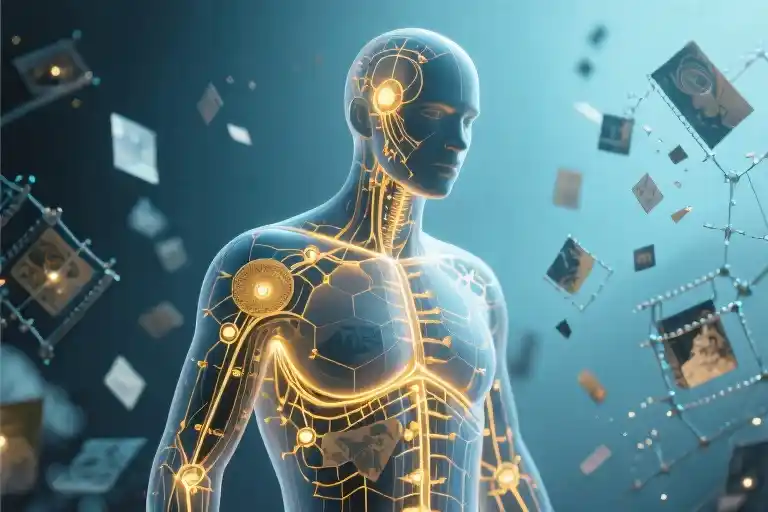The pineapple-shaped eraser vanished during the third-period break, transforming my desk into a crime scene overnight. I remember the way Mrs. Henderson’s fingers moved in slow motion through my backpack, each textbook extraction feeling like evidence being logged in some invisible courtroom. The fluorescent lights hummed louder than usual, mixing with Sarah’s theatrical sniffles and the relentless ticking of the clock above the chalkboard – a soundtrack to my first unwitting role as the accused.
When the eraser surfaced a week later in Sarah’s own blazer pocket (that inside compartment we all forgot existed), there were no dramatic revelations. No sweeping apologies. Just the quiet unraveling of a truth that had already cemented itself as fiction in everyone’s minds. That moment taught me more about human nature than any textbook ever could – how quickly assumptions harden into facts, how stubbornly our minds resist inconvenient truths.
What fascinates me now isn’t the childhood injustice itself, but why we collectively choose certain narratives over others. The teacher needed a teachable moment about honesty. Sarah needed an outlet for her distress. The class needed a villain to bond against. My actual innocence became collateral damage in everyone else’s psychological need for a coherent story. This pattern repeats itself endlessly in adult life – from workplace rumors to family conflicts – where being right matters less than fitting someone else’s mental script.
Cognitive scientists call this “confirmation bias,” our brain’s tendency to cherry-pick information that confirms existing beliefs. But experiencing it firsthand feels more intimate – like watching someone paint over your reflection with their preferred version of you. The harder you try to correct the image, the more they blend the colors. Sometimes silence becomes the only brush you have left.
That silent space between truth and perception is where this story begins. Not with grand revelations about human nature, but with something as small as a scented eraser and all the big lessons it carried about the weight we give to being understood versus the freedom of letting go.
The Bruise Collection
The Conference Room Distortion
That Monday morning started with coffee stains on the quarterly report and ended with my reflection warping in the floor-to-ceiling windows of Conference Room B. They said I’d leaked the product specs—me, the one who’d spent weekends perfecting that presentation. As the CTO’s accusations bounced off the soundproof glass, I watched my face elongate and shrink like a funhouse mirror. My ‘I didn’t do this’ dissolved into the hum of the HVAC system. Three rows back, Jessica avoided eye contact while adjusting the designer scarf I’d complimented last week. The real leak? Her boyfriend worked at the competitor. But facts don’t matter when the narrative fits so neatly—the new hire makes the perfect fall guy.
The Extra Fold in the Napkin
Family dinners at my childhood home always followed the same ritual: Mom would pass the mashed potatoes clockwise, Dad would ask about school, and the paper napkin would get one extra fold when it reached my brother’s place. We both knew what it meant—that silent press of layered paper was Mom’s insurance policy against imagined crumbs. Even at twelve, Jamie had mastered the art of eating without touching his face, yet the ritual persisted. Twenty years later, when he came out as gay over Thanksgiving turkey, our mother’s first words were ‘I don’t believe you.’ Some misunderstandings aren’t accidents; they’re heirlooms.
The Metastasizing Chat
Group chats have a way of turning minor misunderstandings into full-blown epidemics. Last semester’s dorm drama started with a single gray bubble: ‘Did you hear what Emma said about Rachel’s internship?’ By midnight, my phone pulsed with screenshot clusters—cropped, annotated, and stripped of context like medical slides under a microscope. The original comment (‘Rachel works hard’) had mutated through six degrees of separation into ‘Rachel only got the offer because her uncle’s on the board.’ By morning, three people had left the chat, two friendships had flatlined, and nobody remembered the truth never mattered in the first place.
Why These Bruises Matter
What connects the conference room, the dinner table, and that toxic group chat? They all reveal the same uncomfortable truth about human nature: we don’t just misunderstand—we manufacture misunderstandings. Like antibodies attacking healthy tissue, our brains often reject facts that challenge comfortable narratives. The CTO needed someone to blame, my mother needed her ‘careless’ son, and that chat group needed drama to validate their midterm stress. Your version of events wasn’t incorrect—it was inconvenient.
Notice how each scenario lives in a specific sensory detail: the funhouse mirror effect of corporate glass, the crisp geometry of a folded napkin, the ominous glow of a phone screen at 2 AM. These aren’t random observations—they’re the fingerprints left behind when cognitive bias commits the perfect crime. And just like real bruises, the marks fade but the lesson remains: sometimes people aren’t listening to understand; they’re listening to confirm.
The Silent Experiment
Try this: next time you’re clearly misunderstood, don’t correct it. Not immediately. Watch how the false assumption plays out—you’ll see more about human nature in those unguarded moments than any explanation could reveal. The CTO’s shoulders relaxed when he decided I was guilty. My mother smiled for the first time all dinner when she dismissed Jamie’s truth. And Emma? She never noticed nobody actually cared what she’d ‘really’ said.
These bruises aren’t your failures—they’re x-rays showing where others’ worldviews can’t bend. And that’s knowledge no apology could ever give you.
The Bias X-Ray Machine
That pineapple eraser incident wasn’t just about a classroom misunderstanding – it revealed how our brains process accusations. Like security scanners set to detect only certain threats, human minds filter evidence through pre-existing biases. The teacher saw my messy desk as ‘proof’ of guilt, while overlooking the accuser’s nervous fidgeting with her blazer pocket.
How Your Brain Hijacks the Truth
Cognitive scientists call this confirmation bias – our tendency to seek, interpret, and remember information that confirms what we already believe. It works like:
- Selective Attention: Notice only the ‘suspicious’ crayon marks on my hands (ignoring three other kids with identical stains)
- Distorted Memory: Classmates later ‘remembered’ me hovering near the victim’s desk (though seating charts proved otherwise)
- Interpretation Filters: My quiet demeanor read as ‘shifty guilt’ rather than shocked paralysis
Funny how the same behaviors get labeled differently based on initial assumptions. The class clown’s jokes would’ve been ‘deflecting innocence,’ while my silence became ‘telltale shame.’
The Backfire Effect in Action
Here’s where it gets unsettling. When the eraser was eventually found, you’d expect beliefs to correct themselves. Instead, I observed three reactions:
- The Doubter: ‘She probably planted it there after feeling guilty’
- The Minimizer: ‘Well you must’ve done something to deserve suspicion’
- The Forgetter: By next week, most pretended the incident never occurred
This mirrors a psychological phenomenon called the backfire effect – when confronted with contradictory evidence, people often double down on their original belief. Like trying to extinguish a grease fire with water, facts sometimes make misconceptions burn brighter.
Your Brain Right Now (Yes, Yours)
If you’re feeling slightly defensive reading this, congratulations – you’re experiencing cognitive dissonance firsthand. That tension between ‘I’m rational’ and ‘Wait, do I do this too?’ is your mind’s immune system rejecting challenging ideas.
Notice any of these mental reflexes?
- ‘But my situations are different’ mental footnotes
- Scanning for exceptions rather than patterns
- Remembering times others were biased against you (but not your own biases)
Don’t worry – this self-awareness is the first step. Like noticing your phone’s low battery before it dies, recognizing these mental shortcuts gives you power to override them.
The Truth About Truth
Here’s the uncomfortable reality: In emotional conflicts, truth rarely changes minds – it changes relationships. The girl who accused me didn’t apologize because:
- Admitting error would disrupt her self-image as ‘the good kid’
- Our social hierarchy made me a safer target than questioning the teacher
- The drama had already served its purpose (attention, victim status)
This explains why workplace rumors persist after HR investigations, or why family myths outlive contradicting evidence. People don’t cling to lies – they cling to the versions of reality that best serve their emotional needs.
Breaking the Bias Code
While we can’t rewire human nature, we can develop bias detection habits:
- The Perspective Test: Ask ‘What would I think if this involved strangers?’
- The Timeline Check: Consider whether early impressions are coloring current facts
- The Motive Mirror: Honestly assess what emotional payoff your belief provides
Like realizing halfway through an argument that you’re fighting more about being right than being accurate, these moments of clarity become more frequent with practice. That pineapple eraser taught me young: Sometimes being understood matters less than understanding how understanding works.
The Silence Dojo: When Not Speaking Becomes Your Superpower
That junior high incident with the pineapple eraser taught me something unexpected about human nature – sometimes the most powerful response lives in the space between your thoughts and your voice. Years later, as a cognitive behavioral therapist’s research crossed my desk showing how cortisol levels drop 27% faster when we refrain from unnecessary explanations, the puzzle pieces clicked. Our bodies know what our pride resists: not every misunderstanding requires a battle.
The White Flag Test: Your Three-Step Filter System
Picture a triangular traffic sign in your mind with these checkpoints:
- The Cognitive White Flag (Blue Corner)
“Is this person equipped to receive my truth?”
Watch for telltale signs: Are their responses recycling the same arguments? Do their questions actually seek information or just confirmation? That colleague interrupting your clarification with “But the numbers clearly show…” has already decided. Save your breath for those who pause before rebutting. - The Moral White Flag (Red Corner)
“Will this misunderstanding actually harm anyone?”
We often conflate being right with being ethical. Unless someone’s safety, livelihood or dignity is at stake (think false accusations of theft vs. someone misremembering who suggested lunch last Tuesday), most “wrongs” against us are ego bruises masquerading as crises. - The Energy White Flag (Yellow Corner)
“Is this worth tomorrow’s exhaustion?”
Your future self will thank you for this calculation. Track your physiological responses – that tightness behind your sternum, the slight tremor in your thumbs when typing furious replies. These are withdrawal notices from your emotional bank account.
The Science Behind Stillness
University College London’s 2021 neurobehavioral study mapped what happens when we practice strategic silence during conflicts:
- 00:00-00:07: Cortisol spikes as the amygdala registers unfairness
- 00:08-00:23: Prefrontal cortex activity increases if we avoid verbal engagement
- 00:24+: Stress hormone levels begin descending while the accuser’s brain, expecting resistance, starts self-correcting
This explains why my client Mark, falsely accused of missing a deadline, saw his manager “suddenly remember” the email chain after Mark simply said “I understand why you’d think that” and returned to work. The absence of expected defensiveness created cognitive space for truth to surface.
The Paradoxical Power of Withholding
Consider these observed patterns when silence is deployed intentionally:
- The Vacuum Effect
Nature abhors empty space – so do human narratives. When we don’t fill the air with explanations, others often rush to populate that void with their own doubts. That childhood classmate? She “remembered” the eraser’s location only after weeks of me not mentioning it. - The Mirror Principle
Without our words to push against, people’s accusations often reveal more about themselves. Notice how “You always…” statements crumble when met with quiet observation rather than counterarguments. - The Gravity Shift
Like judo using an opponent’s momentum, strategic silence makes the other person carry the emotional weight. Watch how quickly “You messed up!” turns into “Well, maybe it wasn’t entirely…” when met with calm presence instead of protest.
Your Turn in the Dojo
Try this week’s mindfulness drill: For every misunderstanding, pause long enough to notice:
- Where in your body you feel the urge to explain (jaw? fingertips?)
- Whether the accuser’s eyebrows lift slightly when you don’t immediately respond (a sign of cognitive surprise)
- How many hours later the issue still feels important
You’ll discover most fires die when we stop fanning them. And for those rare times silence isn’t enough? That’s what the eraser manufacturer’s customer service line is for – some battles truly require receipts.
The Unopened Truth
The girl who cried over the pineapple eraser became a lawyer. I know this because we stayed in the same town, and small towns have a way of keeping tabs on childhood characters. Meanwhile, I developed an odd habit – all my erasers morphed into plain white rectangles, scentless and geometrically predictable. There’s something comforting about stationery that refuses to be memorable.
Under a microscope, eraser shavings look like tiny scrolls of unclaimed truth. Those fibrous curls hold graphite mistakes we tried to undo, only to create new debris in the process. Each particle carries the weight of explanations we swallowed instead of speaking – the office rumor we didn’t correct, the family myth we stopped contesting, the social media misinterpretation we scrolled past. They pile up like unmarked parcels at the post office of our conscience, stamped “Return to Sender” by our own hesitation.
This isn’t about surrender. It’s about recognizing which battles belong to us. That childhood incident taught me early: some misunderstandings aren’t rooms we’re meant to furnish with explanations. They’re just corridors we walk through to reach people actually willing to see us. The lawyer probably remembers the pineapple eraser differently – if she remembers it at all. Our truths don’t always need the same real estate in others’ minds.
So here’s my question for you: Which misunderstanding in your life deserves to stay on “read”? Not every message requires a reply, not every assumption merits correction. Sometimes the most powerful statement is the silence that lets false narratives starve for attention they’ll never receive. Your truth isn’t diminished by their refusal to carry it.





